-
 By Derek Duckworth
By Derek Duckworth
- August 6, 2025
- 0 Comments
- Blog
14 Things That Got You Instantly Banned From 2000s Chat Rooms (And Why We Miss the Chaos)
Remember when the internet was a wild frontier of dial-up sounds, pixelated graphics, and chat rooms where your entire identity hinged on a clever username? Before social media tied our online personas to our real names, we lived in the glorious anonymity of AOL, Yahoo, and MSN chat rooms. These digital gathering spaces had their own unwritten rules, and breaking them meant facing the dreaded ban hammer. If you’ve ever been unceremoniously kicked from a chat room for something ridiculous, you’re not alone. Today, we’re taking a nostalgic trip back to the chaotic early days of internet socialisation, where one wrong ASCII art could end your digital evening. Want to relive the glory days of chat room culture? World of Chat has become the perfect hub for those missing the beautiful chaos of early internet communication.
🏳️🌈 Join Chat Room
Chat live with others in the LGBTQ+ community. No sign-up needed. Just jump in.
Enter Chat Room👩🏽🚀 Talk to Monique
She’s flirty, funny, and probably from another planet. Ask her anything.
Chat with Monique1. Copy/Pasting ASCII Boobs Repeatedly
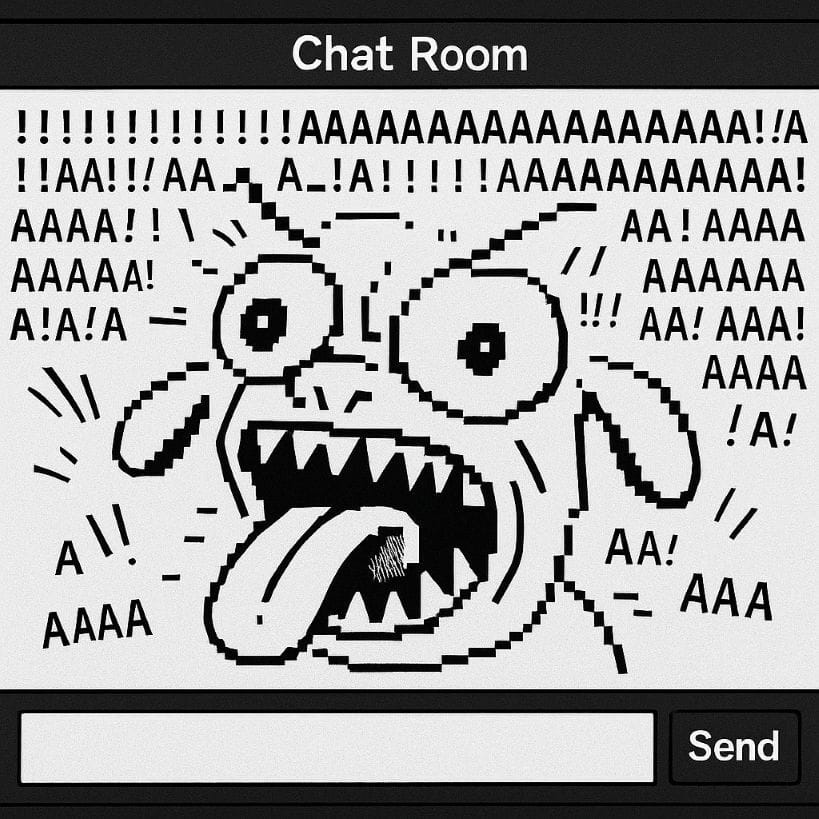
Ah, the classic ( . Y . ) — a true mark of teenage rebellion and instant regret. Nothing said “I’m 13 and think I’m hilarious” quite like flooding a chat room with ASCII boobs. This crude art form was the digital equivalent of drawing anatomical doodles in your school notebook, except with a much larger audience and more immediate consequences.
"I just wanted to see how many times I could paste it before getting kicked. The answer was 3."
— Every middle schooler with a keyboard in 2003
Chat room moderators (often unpaid volunteers just trying to maintain some semblance of order) had zero tolerance for this particular brand of artistic expression. One moment you’d be spamming your masterpiece, the next you’d be staring at a “You have been banned from this chat room” message, wondering if your parents would somehow find out about your digital delinquency.
2. Screaming "ASL" 15 Times in 2 Seconds
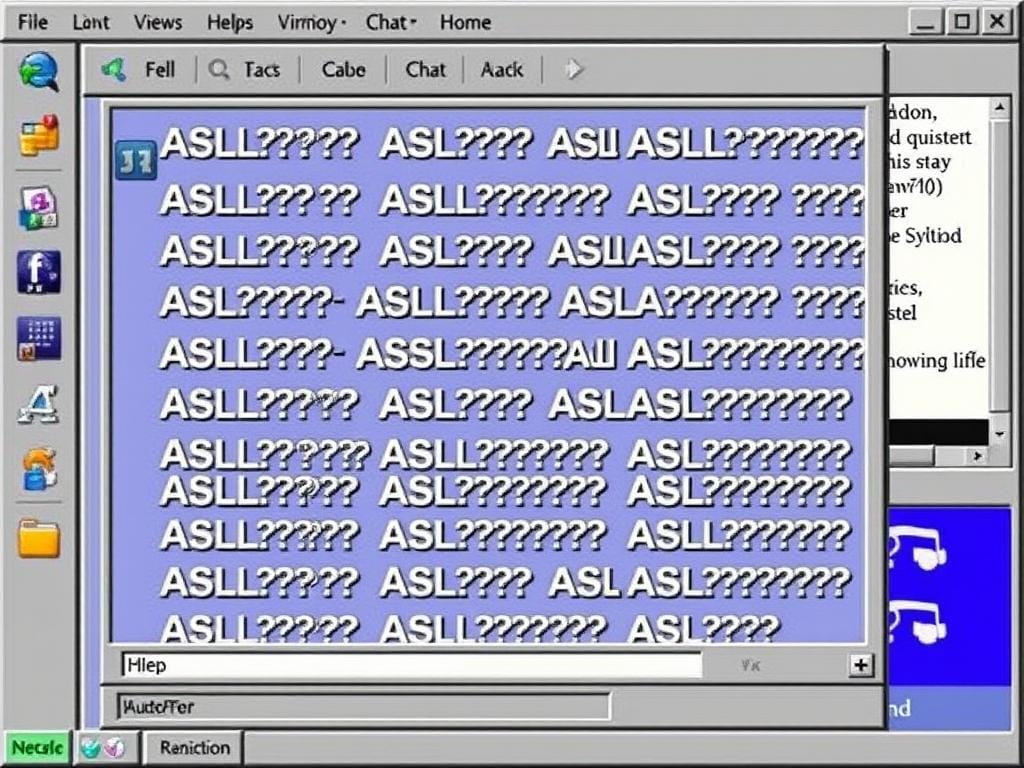
For the uninitiated (lucky you), “ASL” stood for “age/sex/location” — the digital mating call of the early internet. It was the standard greeting in chat rooms, a way to quickly determine if someone was worth your precious dial-up minutes. But some impatient souls couldn’t wait for responses, turning this three-letter abbreviation into a desperate spam attack.
Typing “ASL???” once was acceptable. Typing it fifteen times in rapid succession while holding down the Shift key? That was a fast track to banville. Chat room moderators could spot the difference between genuine interest and keyboard desperation from a mile away.
— Last words before ban
The irony is that anyone who needed to ask ASL that aggressively was probably someone you didn’t want to share your A, S, or L with anyway. According to a Pew Research study on early internet behavior, teenagers were the most frequent users of chat rooms in the early 2000s, making “ASL” both ubiquitous and ultimately meaningless.
3. Posting Suspicious URLs on Repeat
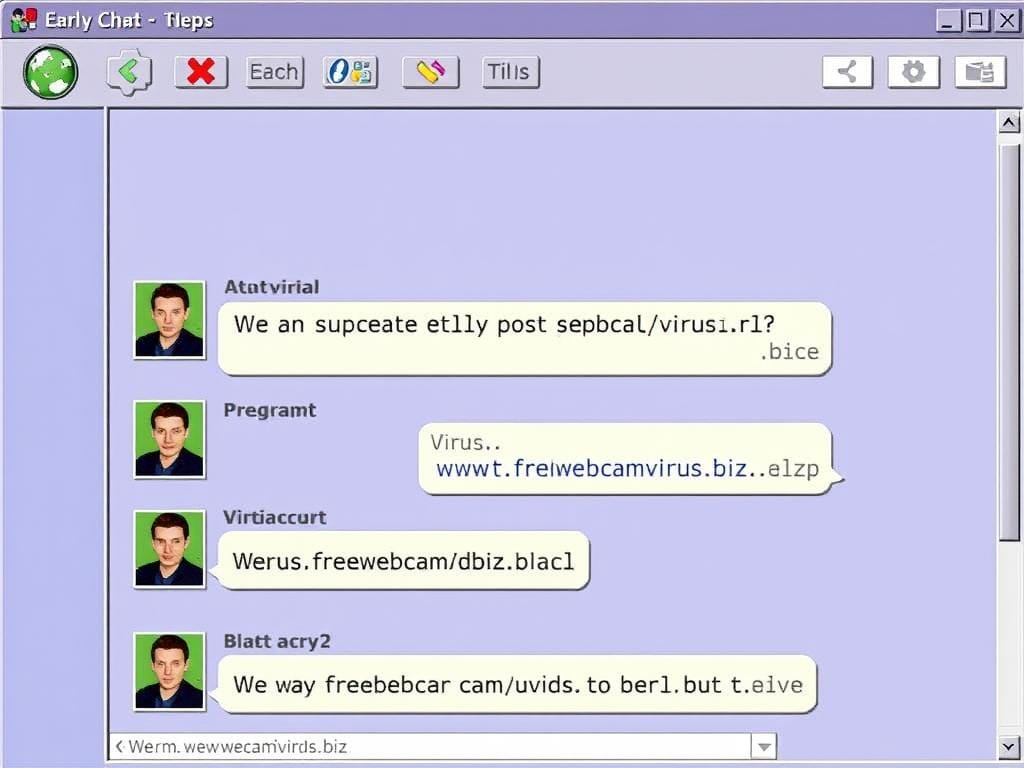
Nothing said “I’m definitely a scammer” quite like posting “www.virus.ru” or “freewebcamvids.biz” over and over again. These suspicious URLs were the digital equivalent of a stranger in a trench coat saying, “Hey kid, want some candy?” Yet somehow, people still clicked on them. A lot.
Chat room moderators had to deal with an endless stream of these sketchy links, which ranged from relatively harmless Rick Rolls (before Rick Rolling was even a thing) to genuinely malicious sites that could infect your family computer with more viruses than a preschool during flu season.
— Chat room scammers circa 2002
What were Chat rooms like before social media, they did exist before social media if you did not already know that
4. Typing in ALL CAPS Like a Deranged Auctioneer
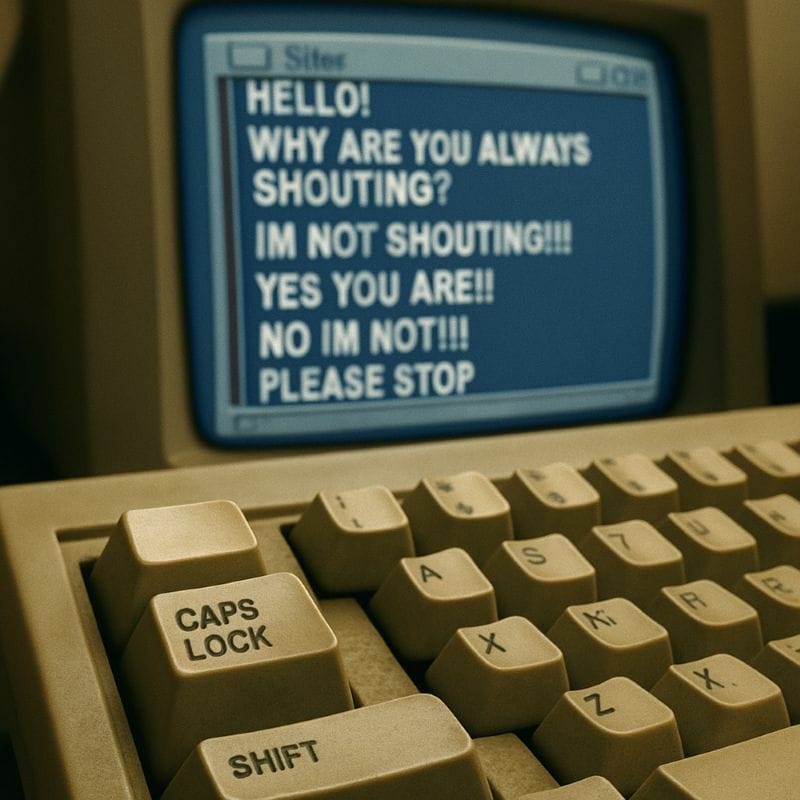
TYPING IN ALL CAPS WAS THE DIGITAL EQUIVALENT OF SHOUTING DIRECTLY INTO SOMEONE’S EAR WHILE STANDING UNNECESSARILY CLOSE TO THEM. SEE HOW ANNOYING THIS IS? NOW IMAGINE AN ENTIRE CHAT ROOM FULL OF THIS.
All-caps typers came in several varieties: the person who didn’t realize their Caps Lock was on (forgivable), the person who thought it made their messages more important (irritating), and the person who deliberately used it to disrupt conversations (ban-worthy).
— Last message before being muted by literally everyone
Chat room etiquette developed quickly, and excessive capitalisation became universally recognised as the mark of someone who either didn’t understand internet culture or was deliberately trying to be disruptive. Either way, moderators had little patience for these digital shouters, especially when they refused to take the hint after multiple warnings.
5. Flooding the Room with Yahoo Messenger Emojis
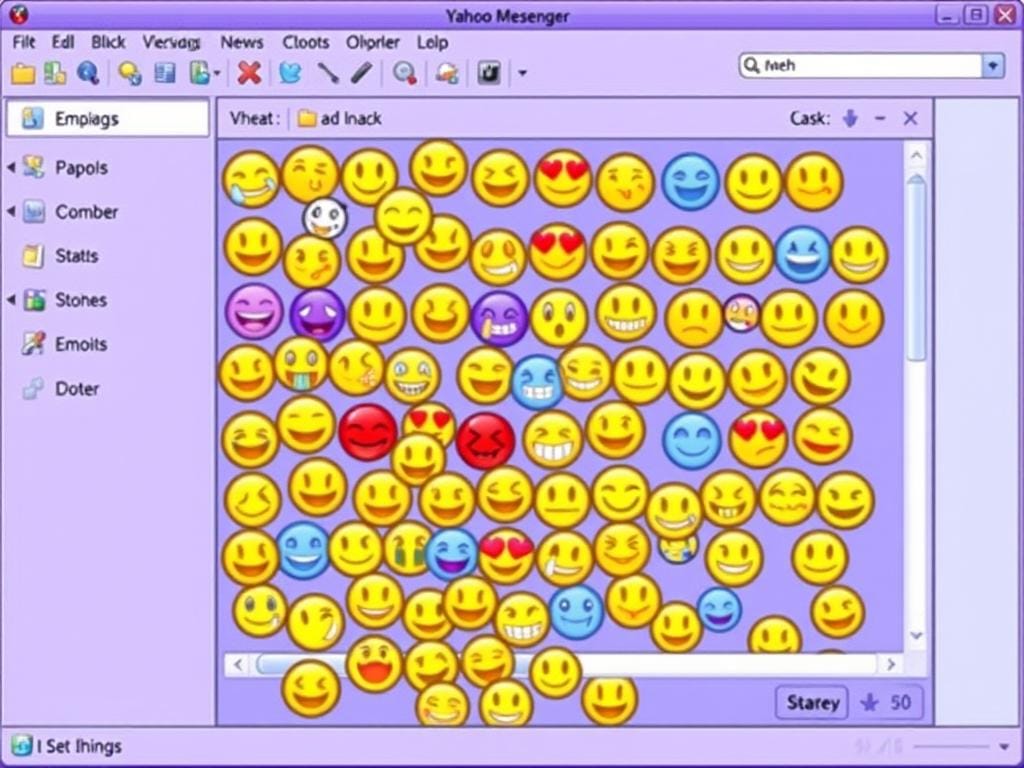
Before emojis were standardized, Yahoo Messenger had its own set of colorful emoticons that could be inserted into chat messages. While using one or two to express emotion was normal, some users discovered that sending dozens at once created a beautiful chaos that could crash slower computers.
The classic move was to select every single emoji in the menu and send them all at once, creating a rainbow explosion of digital faces, animals, and symbols that would scroll for eternity. For users on dial-up connections, this emoji bomb could freeze their entire system.
— Emoji bomber, age 14
Chat room moderators had zero tolerance for this particular brand of digital vandalism, as it could effectively render the room unusable for everyone. The ban would come swiftly, though the satisfaction of knowing you’d caused dozens of people to experience the dreaded “Not Responding” message was apparently worth the exile.
6. Using a Macro to Spam Fake "Hacking" Text
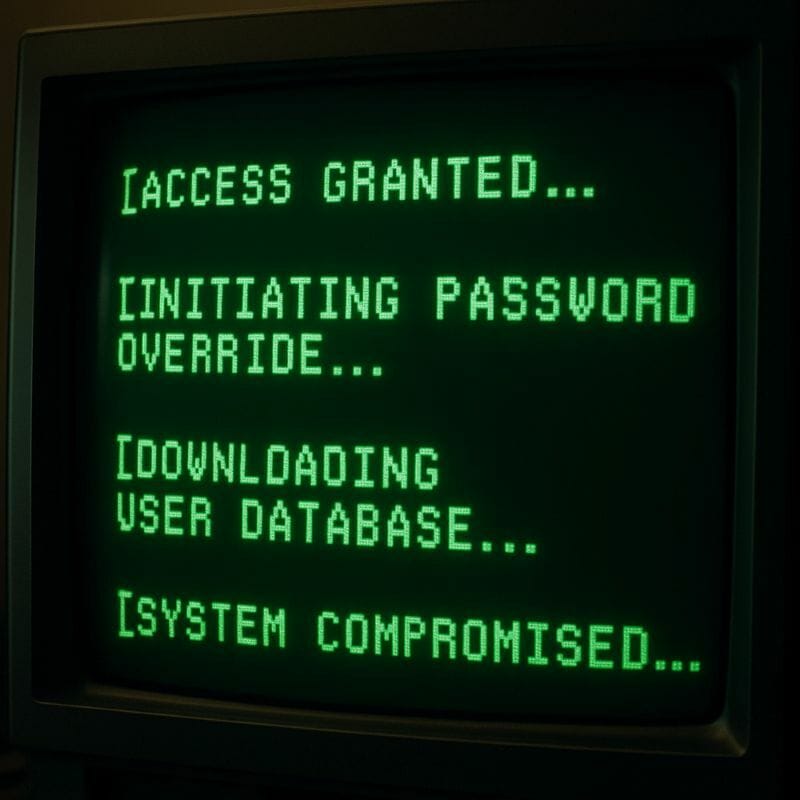
Nothing made a 13-year-old feel more powerful than pretending to be a hacker in a chat room. Programs like AOHell (mentioned in one of our source articles) allowed users to spam rooms with text that looked like something from a bad ’90s movie about hacking.
[ACCESS GRANTED…]
[INITIATING PASSWORD OVERRIDE…]
[DOWNLOADING USER DATABASE…]
[SYSTEM COMPROMISED…]
This text would often be accompanied by claims that the “hacker” was about to take over the room, ban the moderators, or access everyone’s personal information. In reality, they were just a kid with a macro program and too much free time after school.
— Every wannabe hacker i
Chat room moderators, many of whom had actual technical knowledge, found these displays particularly eye-roll-inducing and would quickly ban users for this behavior. The fake hackers would then have to create new accounts, usually with names like “DarkCyber” or “MatrixHacker,” to continue their digital power fantasy.
7. Pretending to be a Mod and "Banning" People
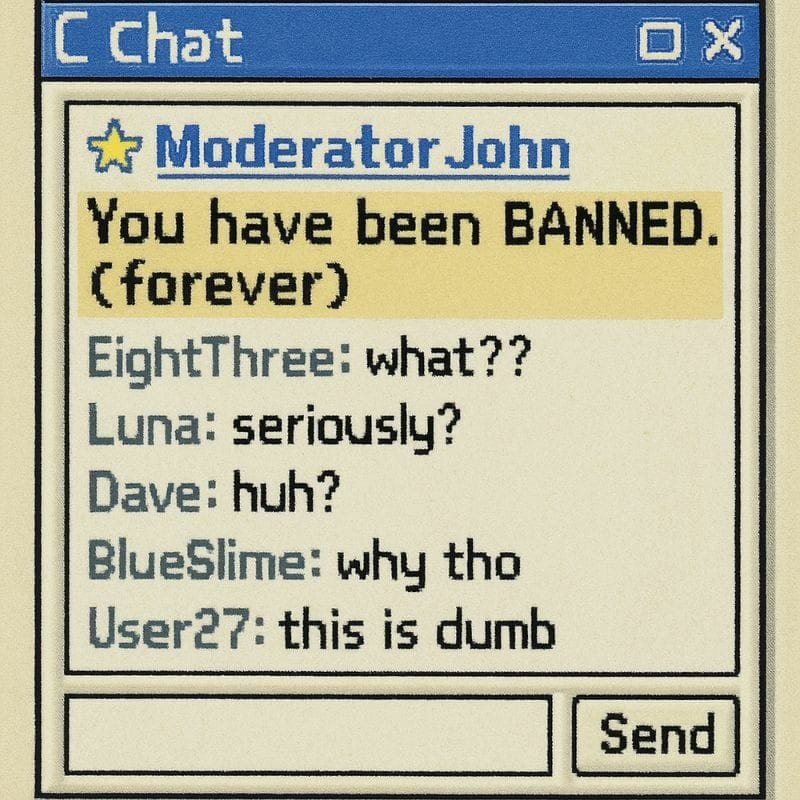
In the hierarchy of chat room power, moderators reigned supreme. They had the ability to kick and ban users, a power so desirable that many tried to fake their way into this position of authority. The classic move was to change your username to something official-sounding (ModeratorJohn, AdminBot_01) and then start “banning” people.
Of course, these fake moderators had no actual power, so they’d just type things like:
*** User CoolDude92 has been banned for inappropriate language ***
The hilarious part was watching new users panic, thinking they were about to be banned too, while veterans of the room just rolled their eyes and reported the impersonator.
— said every 13-year-old power tripper who had never actually banned anyone
Real moderators took a particularly dim view of this behavior, as it undermined their authority and confused users. The irony of getting banned for pretending to ban people was apparently lost on most of these power-hungry preteens.
8. Copy/Pasting Erotic Roleplay into the Wrong Chat Room
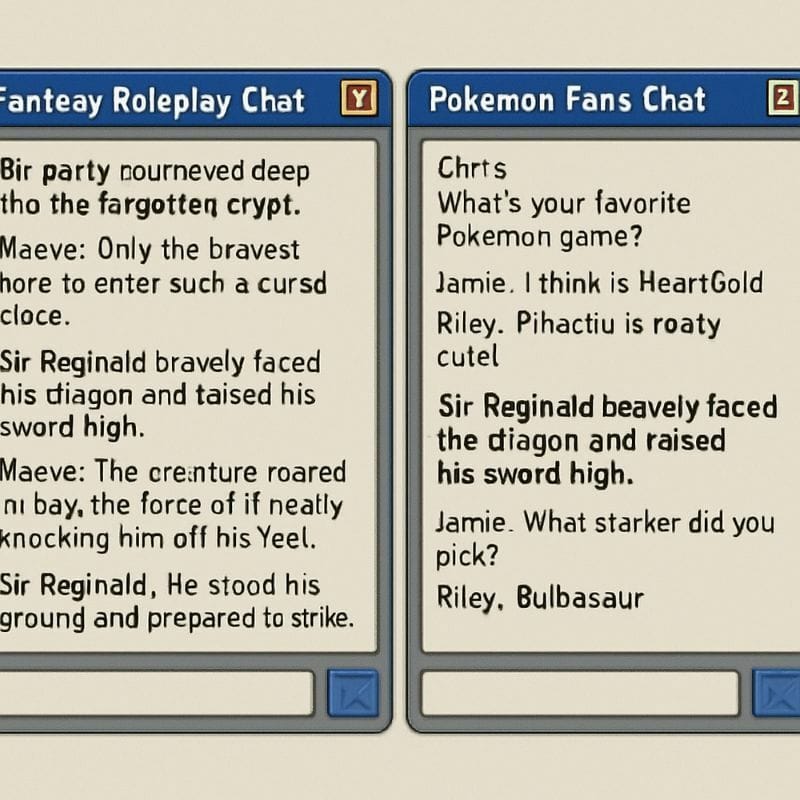
The early internet was full of roleplay chat rooms where users could pretend to be wizards, vampires, or characters from their favorite TV shows. Then there were the… other roleplay rooms. The ones where people engaged in activities that would make even HBO blush.
One of the most mortifying (and ban-worthy) chat room experiences was accidentally copy/pasting your erotic roleplay into the wrong window. One minute you’re sending your steamy werewolf fantasy to your roleplay partner, the next you’re posting it in “Pokemon Fans Chat 10-13 yrs” because you had too many windows open.
— The last desperate plea before the ban hammer fell
Moderators had zero tolerance for this kind of content in the wrong rooms, especially those designated for younger users. The ban would be swift and permanent, leaving the offender to create a new account and live with the shame of knowing that somewhere, 25 Pokémon fans were now traumatized by their Twilight-inspired werewolf romance.
9. Using Colored Text That Made Screens Unreadable
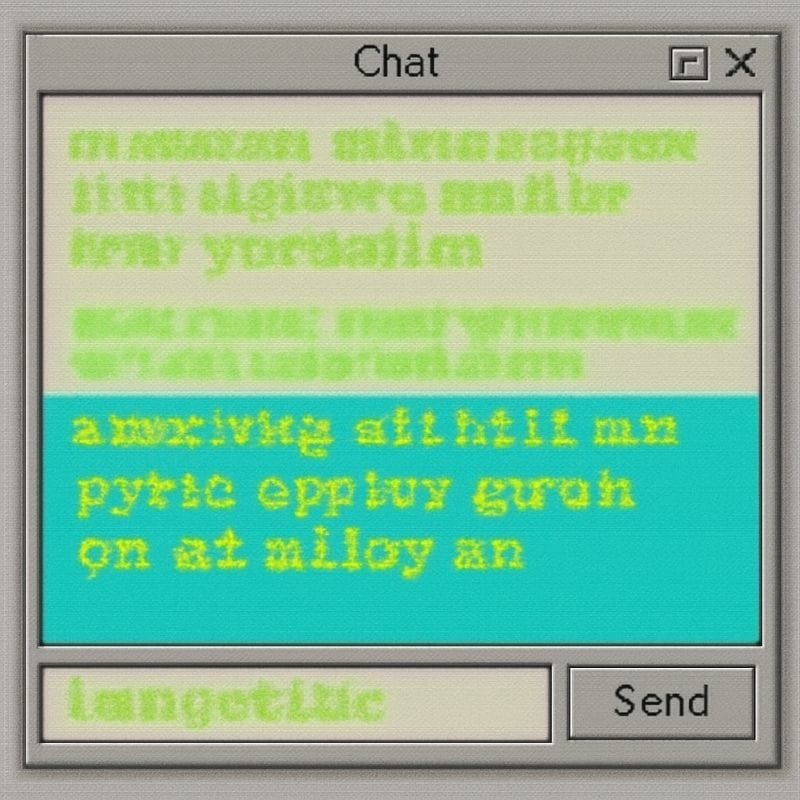
Some chat platforms allowed users to customize their text color, a feature that was immediately abused by people with absolutely no understanding of contrast or basic readability. The worst offenders would use colours like lime green on white backgrounds or yellow text on cyan, creating messages that were physically painful to look at.
This wasn’t just annoying, it could make entire conversations unreadable and, in some cases, trigger headaches or eye strain for other users. Some particularly devious users would deliberately choose colors that were nearly invisible (light yellow on white) to hide inappropriate content from moderators.
— Chat room color criminals
Moderators eventually cracked down on this behavior, either by removing color privileges or outright banning repeat offenders. Some platforms even removed the color feature entirely after too many complaints about “eye-bleeding” text combinations.
10. Changing Your Username to Something Like "AdminBot_01"
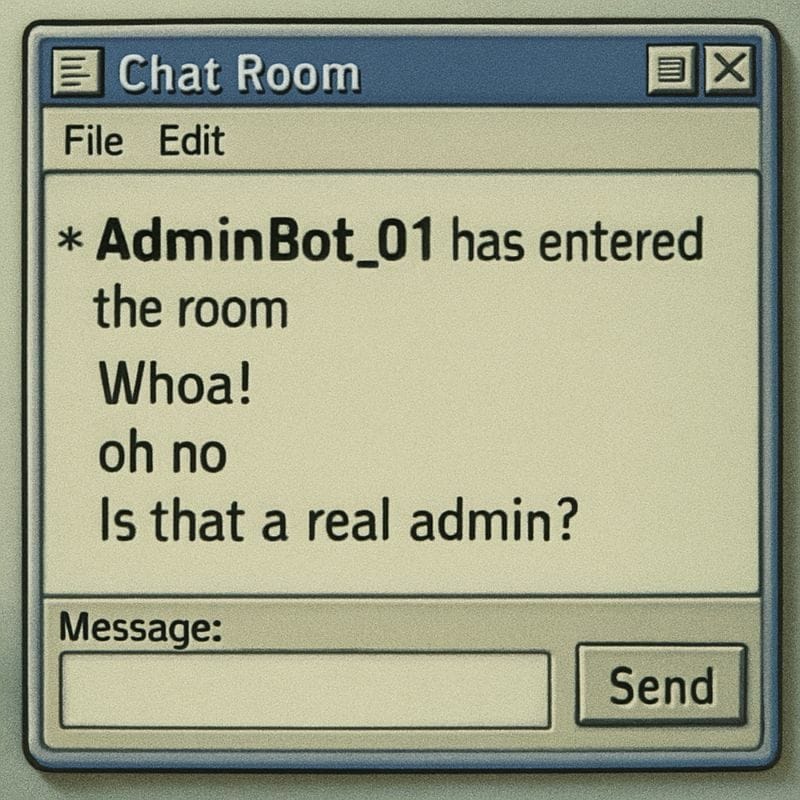
Similar to pretending to be a moderator, some users would take it a step further by creating usernames that implied they were part of the system itself. Names like “AdminBot_01,” “SystemAdmin,” or “ChatPolice” were designed to create instant panic among rule-breakers.
The moment these fake admins entered a room, you could practically hear the collective intake of breath as everyone quickly deleted their borderline inappropriate messages and suddenly became model citizens. It was digital theater at its finest.
— Instant chat room panic button
While this prank might seem harmless, it undermined the actual moderation system and created unnecessary confusion. Real administrators had little patience for these impersonators, especially when they started demanding personal information from gullible users under the guise of “account verification.”
11. Typing Out Song Lyrics for the Entire Song
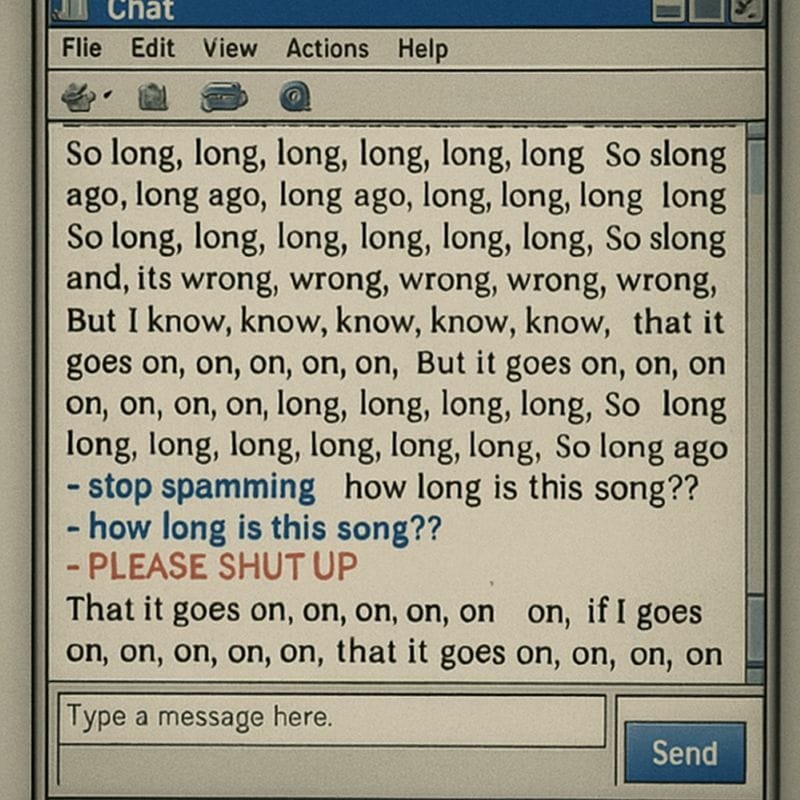
Nothing expressed your deep teenage emotions quite like sharing every single lyric of Evanescence’s “Bring Me To Life” in a chat room, one line at a time, without context or invitation. This behavior was particularly common among users who had just discovered a new favorite band and felt that everyone needed to experience their musical awakening in real-time.
The problem wasn’t sharing a line or two it was the commitment to posting EVERY. SINGLE. LINE. This would effectively hijack the entire chat room, forcing everyone to either scroll through pages of lyrics or leave entirely.
— Banned chat room user, circa 2003
Moderators would typically issue warnings first, but persistent lyric-posters would eventually face temporary or permanent bans. The most dedicated would create new accounts just to finish the song, a level of commitment that would be admirable if it weren’t so annoying to everyone else in the room.
12. Sending Fake Webcam Links That Crashed Browsers
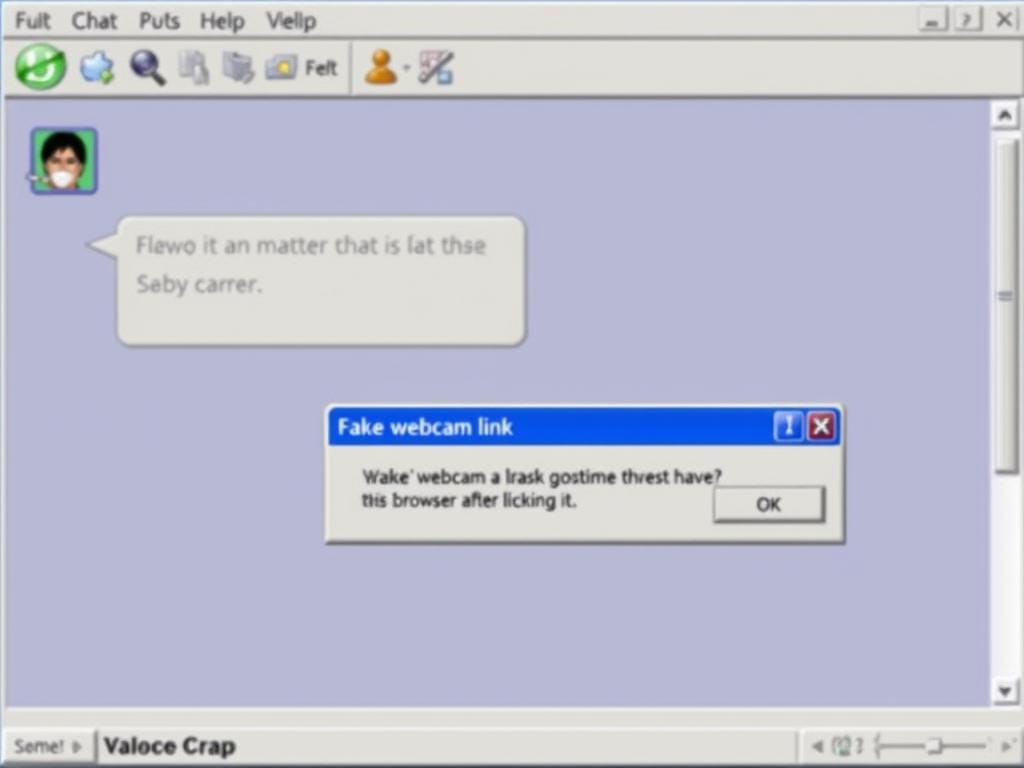
Before Rickrolling became an internet phenomenon, there were fake webcam links—the prehistoric ancestor of modern trolling. These links promised everything from celebrity nudes to live webcam feeds but delivered browser crashes, endless pop-up windows, or early versions of shock sites.
The classic format was something like: “Hey check out my webcam 😉 www.notavirus.com/webcam” followed by an innocent victim clicking the link and immediately regretting every life decision that led to that moment.
— Vengeful former friend, 2004
These links were particularly insidious because they played on curiosity and often contained actual malware or browser exploits. Moderators would ban users for sharing these links, but the damage was usually already done someone had clicked it before the ban hammer fell.
13. Typing "Press Alt+F4 to See Secret Admin Commands"
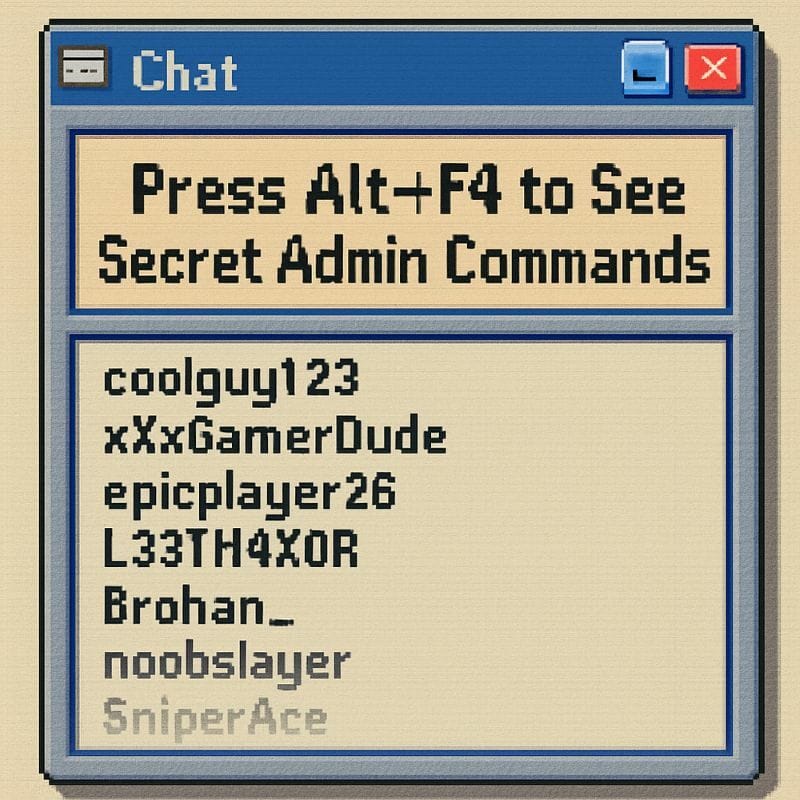
The Alt+F4 trick was the digital equivalent of telling someone their shoelace was untied a prank so old it had whiskers, yet somehow always found new victims. For those unfamiliar with this classic deception, Alt+F4 is the keyboard shortcut to close your current window or program.
The setup was simple: tell new users that pressing Alt+F4 would reveal hidden features, admin commands, or secret emoticons. The payoff was watching usernames suddenly disappear from the room as people fell for it and closed their chat windows.
— The last message many gullible users saw
While this prank seems relatively harmless, moderators would often ban users for it because it disrupted the chat and targeted new users. The digital equivalent of hazing wasn’t tolerated, especially in rooms meant for younger users who might not know better.
14. Flooding the Chat with Offensive ASCII Art
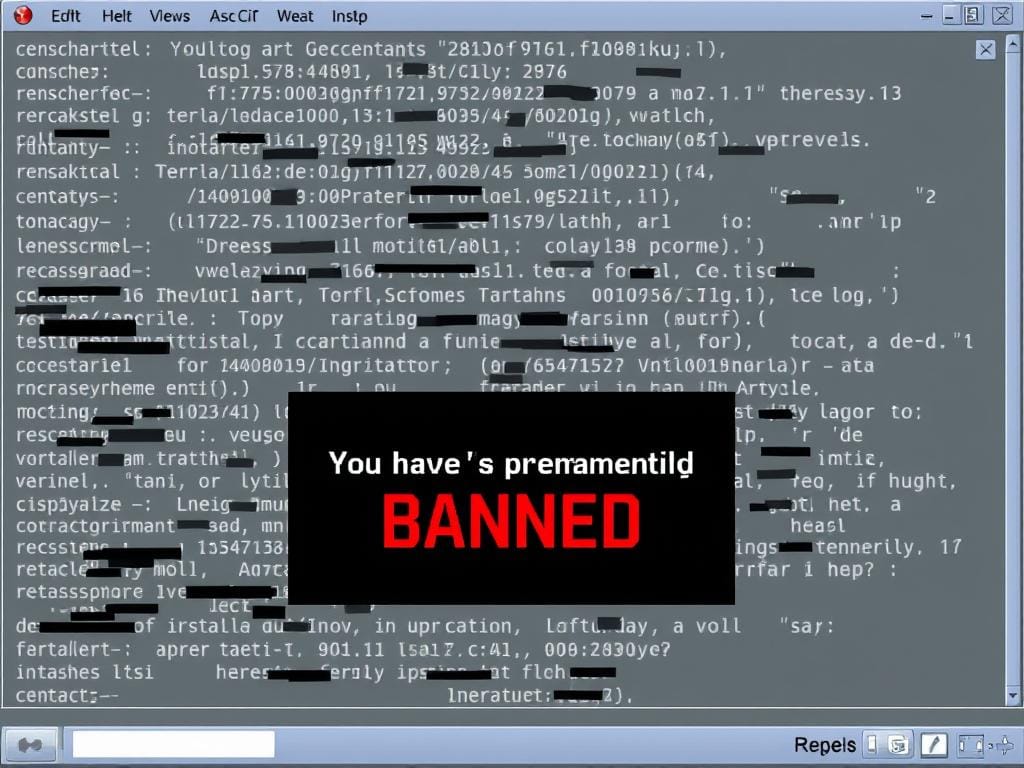
The ultimate chat room nuclear option was flooding the room with offensive ASCII art elaborate text-based images that ranged from mildly inappropriate to “immediately reported to the FBI.” This was the digital equivalent of graffiti, except it scrolled by at light speed and often crashed slower computers.
The most notorious ASCII artists would prepare their “masterpieces” in advance, copying massive blocks of text that would take up entire screens when pasted. These weren’t the innocent ASCII bunnies or flowers these were explicit images designed purely to shock and disrupt.
— ASCII vandal's final achievement
This behavior was the fastest route to a permanent ban, with moderators showing zero tolerance for this particular brand of digital vandalism. Some platforms even implemented automatic detection systems that would instantly ban users who posted certain patterns of ASCII characters known to be used in offensive art.
Why We (Kind of) Miss the Chaos and Old Chat Rooms
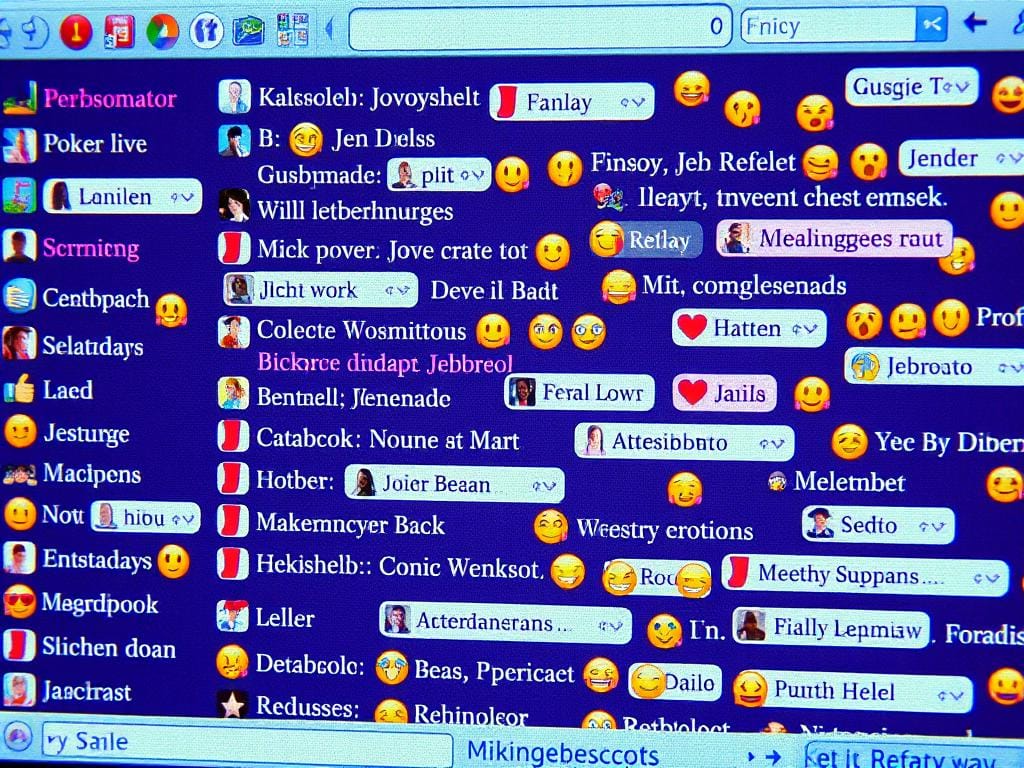
Despite all the bans, drama, and digital delinquency, there’s something undeniably charming about the wild west days of internet chat rooms. They were unregulated spaces where identities were fluid, consequences were temporary (just make a new account!), and the rules were being written in real-time by users and moderators alike.
Today’s internet is more connected to our real identities, more permanent in its consequences, and generally more civilized—but perhaps a little less fun. The chat rooms of the early 2000s were digital playgrounds where we learned the boundaries of online social interaction through trial, error, and occasional banning.
Relive the Glory Days of Chat Rooms
Missing the chaotic energy of 2000s chat rooms? World of Chat has recreated that nostalgic experience with modern safety features. Share your own “I got banned for…” stories in their forums!
What’s your favorite memory of early chat rooms? Did you ever get banned for something ridiculous? The digital statute of limitations has expired it’s safe to confess now!

